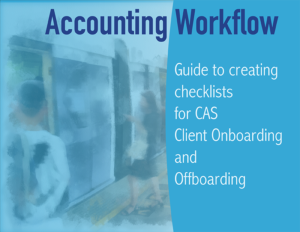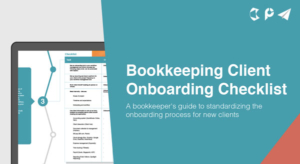Documenting your firm’s procedures is a big job – and one you don’t want to ignore. And, much as I hate to be the bearer of bad news, you can’t just write them and forget about them. There are few certainties in running a firm, but one is that things are going to change. So your procedures need to be able to adapt to a world that is constantly on the move. When you’re developing your procedure maintenance system, consider how you will handle changes generated by three different aspects of your firm: your tools, your staff, and your clients.
Maintaining procedures involving your tools
 The advent of cloud accounting is revolutionizing our industry, changing the way we provide services to our clients. At the same time, it presents a significant challenge to us in keeping on top of the latest technology. If you are deliberate about selecting the tools you use, you will have a defined set of apps you need to stay on top of – but even that presents a challenge.
The advent of cloud accounting is revolutionizing our industry, changing the way we provide services to our clients. At the same time, it presents a significant challenge to us in keeping on top of the latest technology. If you are deliberate about selecting the tools you use, you will have a defined set of apps you need to stay on top of – but even that presents a challenge.
You need to have a plan in place for dealing with how changes and new features to your suite of tools affect your current procedures. Does a new feature eliminate the need for that workaround you carefully documented? Are the screenshots you took six months ago no longer accurate? Is that particular set of services now being handled with a different app?
There is no one method for staying on top of these changes. In my firm, we take turns being ‘gurus’ for the apps we use. The app guru is responsible for staying on top of all changes and new features and communicating that to the rest of the team – including keeping procedures up to date. We rotate guru spots every six months which provides cross-training for my firm and enhances professional development for my team. Other possible systems might be scheduling a regular “checkup” of your procedures to make sure they are accurate or training your staff to notify you when they notice new features in an app.
How your staff fits into procedure maintenance
Clear communication with your team is essential in keeping the firm’s procedures up to date. The staff should be aware that one of the reasons to have procedures in the first place is for consistency and scalability, so deviations from the standard procedure should not be undertaken lightly. This is especially true if clients pay a fixed amount for your services. If you’ve priced your services based on a set of predefined process, deviations could end up eating into your margins.
At the same time, you want to encourage your staff to look for ways to improve current processes. Again, communication is key here. Encourage your staff to look for better ways to perform their tasks, but have a process in place for how changes are incorporated into your documented procedures. Can they update procedures directly without any review? Or do they need to contact you or another manager with suggested changes?
Maintaining client-specific procedures
Every firm has at least a few procedures that are specific to one client. You should make sure you have a system for keeping these procedures up-to-date as well. Just as your firm is constantly changing and growing, your clients are too. Sometimes procedures simply need to be updated with new client contact information or some other simple update. But sometimes changes are generated by significant alterations in the client’s organization or by the client requesting a change in the process.
No matter what the change is, your team needs to know how to handle it.Again, if you’ve set a price for your services based on one set of circumstances, a change in those circumstances could affect your profitability. Your staff should be aware that deviations from written procedures are red-flags and should not be allowed without question. It’s easiest to use the same system to review changes caused by clients as for changes generated by team members. But whatever system you decide to use, make sure that everyone understands how to handle them.
Whatever system you decide on to keep your procedures up to date, make sure that it is clearly communicated to your entire firm. Change should be expected and even encouraged – service firms keeping pace with technology and best practices will want to update procedures commensurately.











